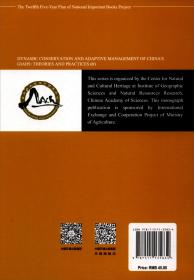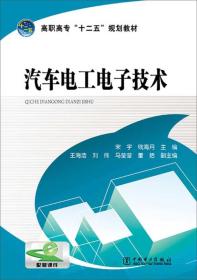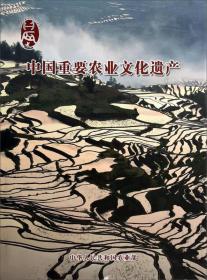
重要农业文化遗产的动态保护和适应性管理:理论与实践(4英文)
¥ 17.6 3.9折 ¥ 45 全新
库存3件
河北保定
认证卖家担保交易快速发货售后保障
作者Min Qingwen、Li Heyao、Zhang Bitian 编
出版社中国环境出版集团
出版时间2018-04
装帧平装
货号9787511135834
上书时间2024-11-13
- 最新上架
商品详情
- 品相描述:全新
图书标准信息
- 作者 Min Qingwen、Li Heyao、Zhang Bitian 编
- 出版社 中国环境出版集团
- 出版时间 2018-04
- ISBN 9787511135834
- 定价 45.00元
- 装帧 平装
- 开本 16开
- 【内容简介】
-
World natural and cultural heritage is a human civilization treasure which formed through the multiple roles of the long-time geologically historical evolution and the human activities. With the population continuously growing, its effect to the environment gets worse and worse, at the same time the natural and cultural heritage has to face the threats of modernization. In order to strengthen the research and protection of natural and cultural heritage, UNESCO had passed the \"world natural and cultural heritage conservation law\" in November, 1972 (World Heritage Convention) which received positive responses from many countries.
To some extent, natural and cultural heritage conservation shows the degree of civilization progress and the development level of education, science and technology and culture of one country. Being the world cultural heritage, it can strengthen the visibility of one country, one region, one city, even making some unknown areas famous in one night. Particularly, it was worthy of note that carrying out the heritage conservation education contributes to reinforcement of human beings\' identity and pride to the world\'s natural resources and their own culture, and establishes the nation\'s self-esteem and self-confidence. Meanwhile it teaches them how to get along with other culture around the world. Loving the nature and enhancing the awareness of environmental protection and sustainable development are playing an irreplaceable role in maintaining the world peace and promoting the common development of all countries. - 【目录】
-
Part I Articles
Understanding Agricultural Heritage Sites as Complex Adaptive Systems: The Challenge of Complexity
Globally Important Agricultural Heritage Systems (GIAHS) of China: The Challenge of Complexity in Research
Challenges and Countermeasures for the Sustainable Developmentof Nationally Important Agricultural Heritage Systems inChina
Resilience of the Hani Rice Terraces System to Extreme Drought
Exploring the State of Retention of Traditional Ecological Knowledge (TEK) in a Hani Rice Terrace Village, SouthwestChina
Standards of Ecological Compensation for Traditional Ecoagriculture: Taking Rice-Fish System in Hani Terrace as anExample
Conserving Agricultural Heritage Systems through Tourism: Exploration of Two Mountainous Communities in China
Progress and Prospects in Tourism Research on Agricultural Heritage Sites
Evaluation of Tourism Water Capacity in Agricultural Heritage Sites
Analyzing Environmental Stress Counter-measures in Agricultural Heritage Sites in China
Typical Water-land Utilization GIAHS in Low-Iying Areas: TheXinghua Duotian Agrosystem Example in China
Spatial Variability Analysis of Soil Nutrients Based on GIS andGeo-statistics: A Case Study of Yisa Township, Yunnan, China
Traditional Agroforestry Systems: One Type of Globally Important Agricultural Heritage Systems
The Qingyuan Mushroom Culture System as Agricultural Heritage
Part II Abstracts
Agricultural Heritage Research and Conservation Practices:Progress and Perspectives
Correctly Handle the Five Relationships in Agricultural Heritage Protection
The Chinese Agricultural Heritage Protection and Utilization of Cross-industry Participation into the Era of \"List\"
Protection and Development of Chinese Agricultural Heritage
Study on the Relation Between Agrocultural Heritage Protection and Regional Economic, Social Development: Taking Xinghua\'s Duotian in Jiangsu Province as an Example
Research on Ecosystem Services Value of Ancient Torreya grandis in Kuaiji Mountain
Soil Stoichiometric Ratio and Its Effect on Carbon Release Potential of jasminum sambac Plantations in Fuzhou
Isolation and Identification of Root Endophytic and Rhizosphere Bacteria of Rice Landraces in Yuanyang Terrace, China
Effect of Enhanced UV-B Radiation on CH4 Emission from Paddy Field in Yuanyang Hani Terr
Mineral Elements in Leaves and Seeds of Torreya grandis\"Merrillii\" during Seed Development
Ecosystem-Service-Based Ecological Carrying Capacity: Concept, Content, Assessment Model and Application
Ecological Stoichiometry Characteristics of Soil Carbon, Nitrogen and Phosphorus in the Tea Garden of Drum Mountain
Monitoring and Evaluation of Agricultural Heritage and Its Framework Design Based on International Experiences
The Smallholder Economy for the Hani Rice Terraces Sustaining Millennium
The Survival and Industrial Development of Tourism: A Study on the Protection and Utilization of Agricultural Heritages
Tourism Resources Utilization of Different Types of Agricultural Heritage Systems
Study on the Differences of Disaster Risk Cognition in the Tourism Community: A Case of Two Types Community of Hani Rice Terraces
The Agricultural Cultural Heritage Tourism Resources Potential Evaluation to Terraces
Development of Rice-Fish System: Today and Tomorrow
Spatial Pattern of Adaptation Potential of Household Agriculture to Droughts in Semi-Arid Regions of China
Calculation of Price Compensation of Agriculture Products in the Period of Organic Conversion in Agricultural Heritage Sites-Taking Paddy Rice of Hani Terrace in Honghe County of Yunnan Province as an Example
Evaluation of Ecological Footprint and Ecological Capacity of Hani Terrace Heritage Area -A Case Study in Quanfuzhuang Village of Yuanyang County
Appfication and Perspectives of GIS in Field of Agricultural Heritage
点击展开
点击收起
相关推荐
— 没有更多了 —

















以下为对购买帮助不大的评价